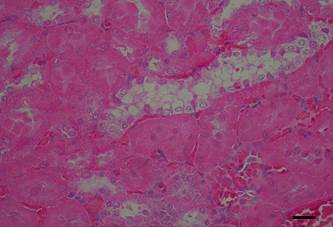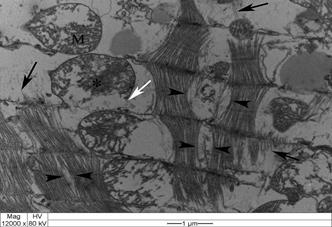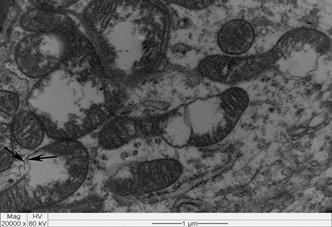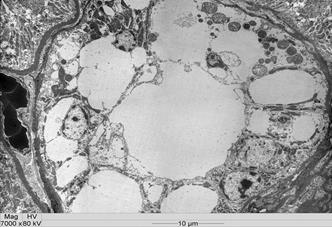Abstract:
Amorimia exotropica is an important plant associated with sudden death in cattle in Southern Brazil. In order to understand the mechanisms by which A. exotropica causes acute lesions in the heart and kidney of intoxicated animals, an experiment was conducted to determine the histopathology and ultrastructure of myocardial and renal lesions of intoxicated rabbits. After receiving 18g/kg of dried plant, six rabbits died suddenly. At necropsy, the liver was swollen and no other macroscopic lesions were observed. Histologically, centrolobular and midzonal hepatocytes were vacuolated. These vacuoles were strong PAS stained positive, suggesting that they corresponded to glycogen accumulations. In some regions of the ventricular septum and ventricles were found vacuoles of different sizes and the kidneys of two rabbits showed vacuolar degeneration on distal convoluted tubules. Ultrastructurally, the myocardium had cardiomyocytes swelling with separation of myofibrils bundles and rupture and disorganization of the sarcomeres. The mitochondria displayed swelling, disorganization, disruption of the mitochondrial cristae, and electron-dense matrix. Some mitochondria exhibited eccentric projections of their membranes with disruption of both outer and inner membranes. The sarcoplasmic reticulum had no alterations, whereas the T-tubule system was occasionally dilated and ruptured. The kidneys had mitochondrial swelling with disorganization and disruption of the mitochondrial cristae. The vacuoles result from the swelling of the endoplasmatic reticulum and usually were located between two basolateral infoldings and mitochondria, occurring preferentially around the nucleus. The myocytes and T system damages induced by A. exotropica result in acute heart failure and death. Furthermore, this mechanism of cardiotoxicity may be common to all plant containing monofluoroacetate.
Index Terms:
Poisonous plants; Amorimia exotropica; monofluoroacetate; ultrastructure; cardiotoxicity; kidney; plant poisoning; sudden death

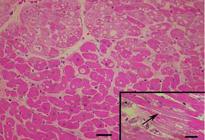 Thumbnail
Thumbnail
 Thumbnail
Thumbnail
 Thumbnail
Thumbnail
 Thumbnail
Thumbnail
 Thumbnail
Thumbnail
 Thumbnail
Thumbnail
 Thumbnail
Thumbnail
 Thumbnail
Thumbnail
 Thumbnail
Thumbnail
 Thumbnail
Thumbnail
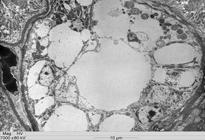 Thumbnail
Thumbnail
 Thumbnail
Thumbnail

